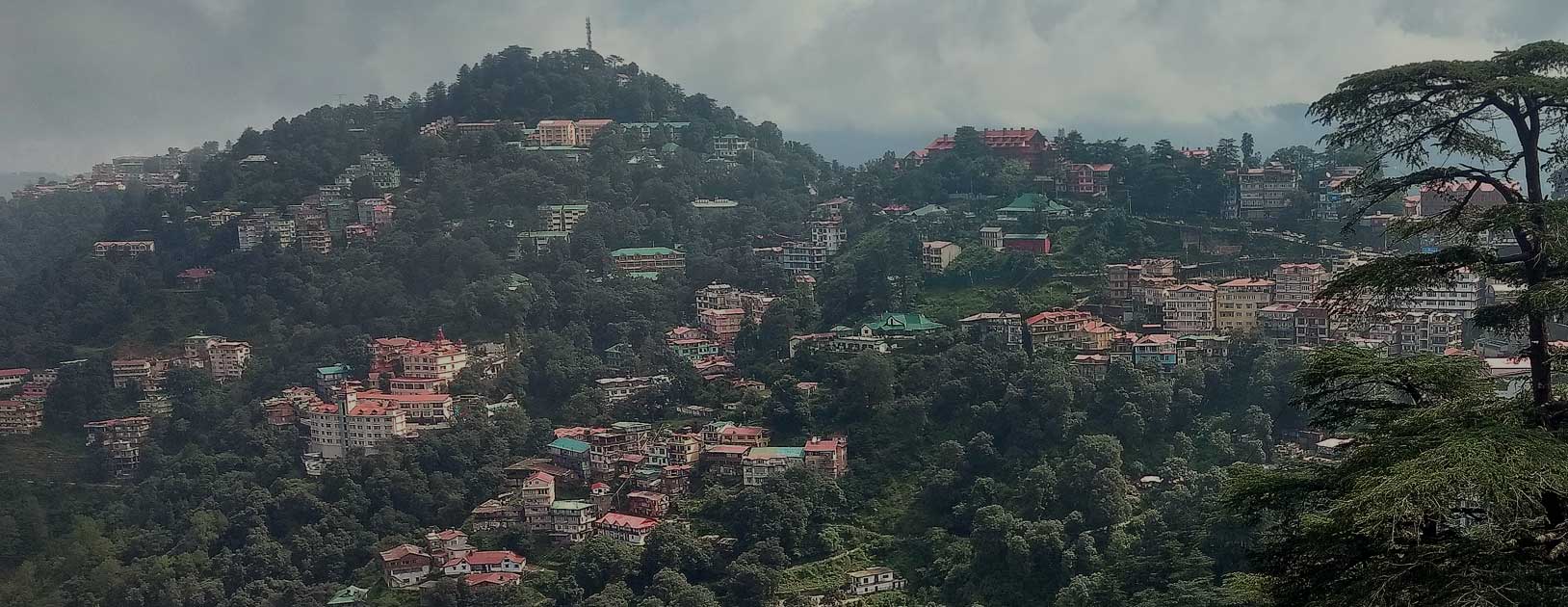By Shyam Saran
The states of India which share the Himalayas are also its principal sentinels. Adaptation to climate change must become an integral part of their development strategies. The special vulnerabilities of this ecologically fragile region need to be recognized, as much as its rich natural resources in terms of forests, water wealth, biodiversity and tourism potential. While a number of long-term measures are included as part of the National Action Plan on Climate Change, 2008, several key and urgent interventions are vital to prevent the further degradation of the Himalayan ecology and to preserve their life-sustaining role for millions of our citizens. This includes those residing not only in the Himalayan states, but also in the entire Indo-Gangetic Plain. It is the perennial rivers arising from the snow mountains that sustain livelihoods in the plains. The new government must prioritize the safeguarding of the fragile ecology of the Himalayas among the issues requiring urgent attention.
Sustainable Urbanization in Mountain Habitats
The cities in the Himalayan mountainous zones are increasing in size and number. They exhibit the same degradation that plagues our cities in the plains: growing dumps of garbage and plastic, untreated sewerage, chronic water shortages, unplanned urban growth, and heavy pollution from increasing vehicular traffic. This phenomenon will only exacerbate the impact of climate change. The following immediate interventions by all the concerned states, supported by the Union government, are necessary:
(i) Town planning and adoption of architectural norms
Given the ecological fragility of mountainous areas, it is imperative to halt the unplanned growth of new settlements. Instead, there should be consolidation of existing urban settlements to be governed through land-use planning incorporated in a municipal master plan. These designated settlements would be provided with all basic urban facilities, such as water supply, waste disposal and power, before further civilian growth is permitted. State authorities will prescribe regulations taking into account the particularities of the local ecosystem, including seismic vulnerability, the need to respect local aesthetics and harmony with nature, and the optimum population load the settlement can sustain, given the availability of water and power. Consolidation of urban settlements would also preclude the need to construct a larger number of road links to a multiplicity of destinations, which would cause further damage to the fragile ecology.
There are 12 Himalayan towns included in the Jawaharlal Nehru National Urban Renewal Mission (JNNURM), which could serve as models in this regard.
Further action points may include:
(a) Municipal by-laws to be amended, wherever required, to prohibit construction activity in areas falling in hazard zones or across alignments of natural springs, water sources and watersheds near urban settlements. There will be strict enforcement of these by-laws, including through imposition of heavy penalties and compulsory demolition of illegal structures.
(b) The National Building Code will be revised by the central government, in consultation with the concerned state governments, to take into account the specific requirements of urban settlements in the Himalayan zone, including recommendations on the use of local materials and local architectural practices.
(c) The state governments concerned will set up state-level urban arts councils, under relevant legislation, to oversee the implementation of the National Building Code for mountain areas and of respective master plans for designated urban settlements.
(d) The compulsory use of solar water heaters, rainwater harvesting and appropriate sanitation facilities will be incorporated in the National Building Code and municipal by-laws in the concerned states.
(e) Construction activity will be prohibited in catchment areas of cities, including along mountain lakes and other water bodies. Their feeder channels will also be kept free of building activity.
In order to enable these decisions to be implemented urgently, it is necessary to draw up, as soon as possible, a comprehensive state-wide inventory of such water resources and their channels, which could then be declared fully protected zones.
(ii) Solid waste management
The following policy directives could be considered:
(a) The use of plastic bags should be banned in all hill towns and villages. This has been done with commendable success in the states of Himachal Pradesh and Sikkim.
(b) Potable local water, certified by a designated state authority, may be provided through all commercial outlets, such as local shops and restaurants. This would discourage the use of bottled water, which adds to toxic plastic litter in hill towns and along trekking routes. This has been done successfully in Leh and promotes local employment. More recently, the use of water ATMs to dispense clean drinking water at affordable rates is being popularized and would be especially suitable in hill towns, pilgrim centres and tourist locations.
(c) Each state must establish facilities for the composting of biodegradable household waste and recycling, and reuse of other types of waste. This may be done through public-private partnership wherever feasible. This will be followed by amendments to municipal by-laws that make the segregation of household waste mandatory, to be accompanied by a focused awareness and public education campaign.
(d) An appropriate state tax or levy on all major commodities using plastic and/or non-biodegradable packaging that enter hill towns must be explored. This will create incentives to manufacturers of these goods to use/develop environmentally friendly packaging.
Promotion of Sustainable Pilgrimage
The following measures to promote the healthy and sustainable development of religious pilgrimage to the many sacred and holy sites scattered all over the Himalayas may be considered:
(i) A comprehensive inventory of key pilgrimage sites in each state would be drawn up, which would include analyses of the ecological capacity of each site, based on its location and fragility. The Union government will assist in this exercise, which would be carried out by multidisciplinary teams including engineers, scientists, ecologists, cultural anthropologists and respected NGOs.
(ii) In advance of the results of the above exercise, a plan must be developed to harmonize the inflow of pilgrims with the local environment’s capacity to cater to the needs of pilgrims. These include the sources of several Himalayan rivers, sacred lakes and forest groves. The selected sites would be listed through public consultation and consensus, and publicly announced. There may also be restrictions on the months of the year when these sites would remain open, to allow recovery of the ecology during the off-season, or on the numbers of visitors. Uttarakhand, for instance, has recently issued guidelines restricting the daily number of pilgrims to the Gangotri glacier (Gaumukh) to 150. In this context, plans to allow year-long access to high-altitude pilgrimage sites at Badrinath and Kedarnath should be abandoned.
(iii) The construction of roads should be prohibited beyond at least 10 km from protected pilgrim sites, thereby creating a much-needed ecological and spiritual buffer zone round these sites. These areas, like national parks and sanctuaries, could be maintained as special areas with minimal human interference, respecting the pristine nature of these sites. Where there are existing roads within the 10-km buffer, vehicular traffic should be allowed only beyond this limit.
(iv) Each designated pilgrimage site should have a declared buffer zone where development activity will be carefully regulated. Local communities residing in or around these sites must be given a role in the management of the buffer zone and encouraged to benefit from pilgrimage activities through providing various services to pilgrims. This has been tried out with some success in the Periyar Tiger Reserve in Kerala.
(v) At all entry points to designated buffer zones, pilgrims will be advised to take back all waste, in particular non-degradable items. Provision may be made to sell them waste collection bags, which could be made by local communities using local materials. Such waste may be collected and sorted out at special collection points outside the buffer zone, for disposal. A fee may be charged for the same.
Commercial and Adventure Tourism
The measures listed for regulation of pilgrim traffic in the Himalayan zone would also apply, to a large extent, to the promotion of ecologically sustainable tourism in the Himalayan region as a whole. The following interventions may also be considered:
(i) Homestead tourism could be promoted in this area and commercial hotel tourism of the three- to five-star variety discouraged or prohibited. Local communities will be encouraged and enabled to provide homestead-based tourist facilities, through a package of incentives and capacity building. The successful experience with homestead tourism in Ladakh is a good example.
(ii) Each state will set up a homestead tourism audit and certification agency to promote standardized and quality practices in designated tourism zones. These would include key environmental guidelines, such as the use of solar energy, use of organic produce, recycling of waste, cleanliness and hygiene, courtesy, knowledge of local culture and landscape, among others. This will also help educate tourists about the importance of safeguarding the Himalayan ecology.
(iii) Recognizing the adverse impact on Himalayan ecology of unrestrained expansion in vehicular traffic, each state should impose an entry tax for vehicles entering important hill towns. A similar tourism tax or trekking charge may be levied for all ecologically fragile zones. The proceeds from such taxes should be used for creating better facilities (for example, clean toilets, tourist shelters) and for benefiting local communities.
(iv) Parking fees for private vehicles in hill markets and hill towns need to be raised substantially to discourage such traffic, thereby reducing both congestion and pollution. Each hill town will designate the central parts of the town as walking areas, with access provided by pollution-free electric or CNG buses.
Green Road Construction
Roads are the lifeline of this remote and inaccessible region. However, the construction of roads must fully take into account the environmental fragility of the region. The concerned state governments must consider promulgating, as soon as possible, the following guidelines for road construction in hill areas.
(i) Environmental Impact Assessment should be made mandatory for the construction of all state and national highways, and expressways of more than 5 km length, including in the extension and widening of existing roads. This will not apply to inter-village roads.
(ii) Road construction must provide for the treatment of hill slope instabilities resulting from road cutting, cross drainage works and culverts, using bio-engineering and other appropriate technologies. Cost estimates for road construction in these areas should henceforth include estimates on this account.
(iii) Plans for road construction must provide for disposal of debris from construction sites at suitable and identified locations, so as to avoid ecological damage and scarring of the landscape. Proposals for road construction must henceforth include cost estimates in this regard.
(iv) Hot mix plants must only be set up at least 2 km away from settlements. These sites should have a minimum open area of 200 sq metres and should be already devoid of vegetation.
(v) All hill roads must provide adequate roadside drains and, wherever possible, be connected to the natural drainage system of the area.
(vi) Alignment of proposed roads should avoid fault zones and historically landslide-prone zones. Where this may not be possible, adequate measures must be taken to minimize associated risks, in consultation with experts.
Water Security
The importance of the Himalayas as a natural storehouse and source of water must be acknowledged fully. The region is already under water stress, with the drying up or blockage of many water sources and natural springs. The following immediate actions are necessary:
(i) Each Himalayan state must initiate a state-wide programme for rejuvenation of Himalayan springs and protection of high-altitude lakes.
(ii) The government must provide legislative protection for mountain lakes, natural springs and key water sources, and prohibit construction activities along these water bodies.
(iii) Relevant bodies should inventorize mountain springs (active and dormant) and also carry out detailed geological mapping to identify spring recharge zones.
Building Environmental Awareness
(i) Local festivals and fairs must be utilized to spread environmental awareness, with the protection of the environment being linked to local cultures and festivals.
(ii) Central and state governments must together organize an annual festival of the Himalayas to celebrate local cultures, which demonstrate ways of sustainable living for resilient societies in harmony with the pristine nature of the Himalayas. This will also expose the rest of the country to the importance of the Himalayas in India’s national life.
Safeguarding the Himalayas: A National Endeavour
There are grave concerns about the challenge the country faces from the impact of climate change on the fragile and life-sustaining ecology of the Himalayas. This spectacular mountain chain is inextricably linked with India’s civilizational ethos and the spiritual and cultural sensibility of our people. It is necessary to initiate and develop a truly national endeavour to safeguard the pristine ecology of the Himalayas. A coordinated approach between the Union and state governments in the Himalayan states is imperative if we are to successfully meet this challenge. It is in this spirit that the prime minister should convene a meeting of the chief ministers of the Himalayan states. The deliberations at the meeting, and the adoption of certain urgent and specific guidelines and decisions, would be the first step in formulating a comprehensive and ambitious national mission for sustaining the Himalayan ecosystem. The prime minister and the chief ministers should meet annually to exchange views, share experiences, review progress and evolve practical and effective measures to make this national mission a success.
Other pieces as part of CPR’s policy document, ‘Policy Challenges – 2019-2024’ can be accessed below:
- The Future is Federal: Why Indian Foreign Policy Needs to Leverage its Border States by Nimmi Kurian
- Rethinking India’s Approach to International and Domestic Climate Policy by Navroz K Dubash and Lavanya Rajamani
- India’s Foreign Policy in an Uncertain World by Shyam Saran
- Need for a Comprehensive National Security Strategy by Shyam Saran
- A Clarion Call for Just Jobs: Addressing the Nation’s Employment Crisis by Sabina Dewan
- Time for Disruptive Foreign and National Security Policies by Bharat Karnad
- Multiply Urban ‘Growth Engines’, Encourage Migration to Reboot Economy by Mukta Naik
- Schooling is not Learning by Yamini Aiyar
- Clearing Our Air of Pollution: A Road Map for the Next Five Years by Santosh Harish, Shibani Ghosh and Navroz K Dubash
- Protecting Water while Providing Water to All: Need for Enabling Legislations by Philippe Cullet
- Interstate River Water Governance: Shift focus from conflict resolution to enabling cooperation by Srinivas Chokkakula
- Managing India-China Relations in a Changing Neighbourhood by Zorawar Daulet Singh
- Beyond Poles and Wires: How to Keep the Electrons Flowing? by Ashwini K Swain and Navroz K Dubash
- Regulatory Reforms to Address Environmental Non-Compliance by Manju Menon and Kanchi Kohli
- The Numbers Game: Suggestions for Improving School Education Data by Kiran Bhatty
- Safe and Dignified Sanitation Work: India’s Foremost Sanitation Challenge by Arkaja Singh and Shubhagato Dasgupta
- Female Labour Force Participation: Asking Better Questions by Neelanjan Sircar




